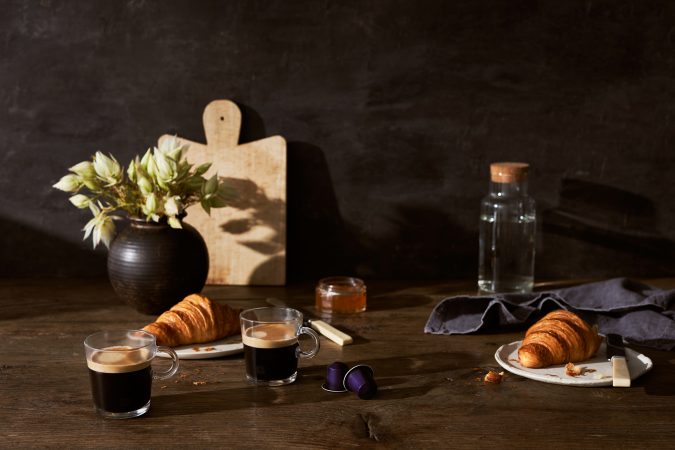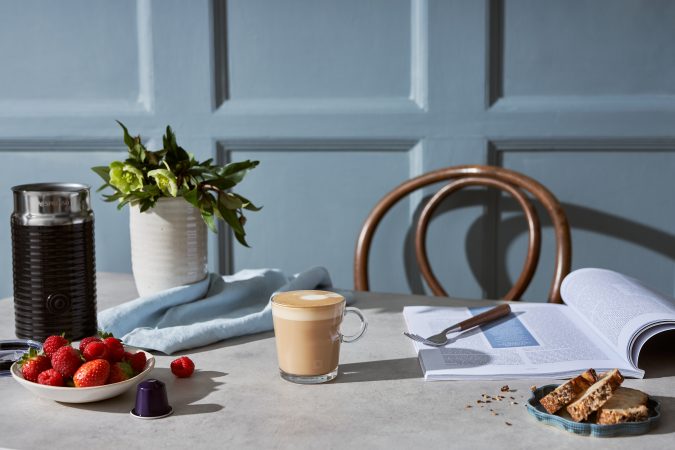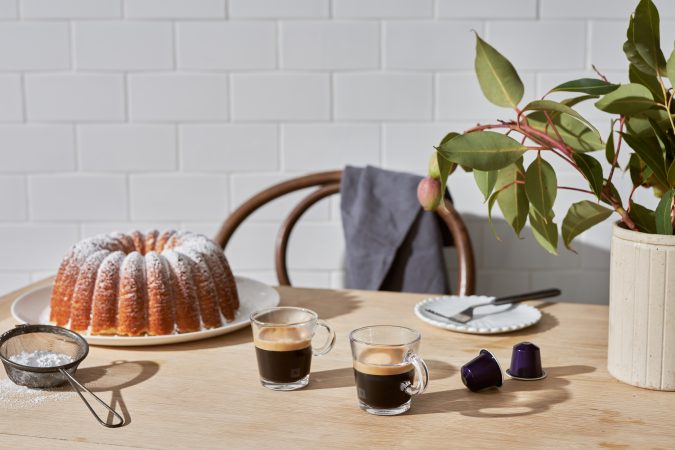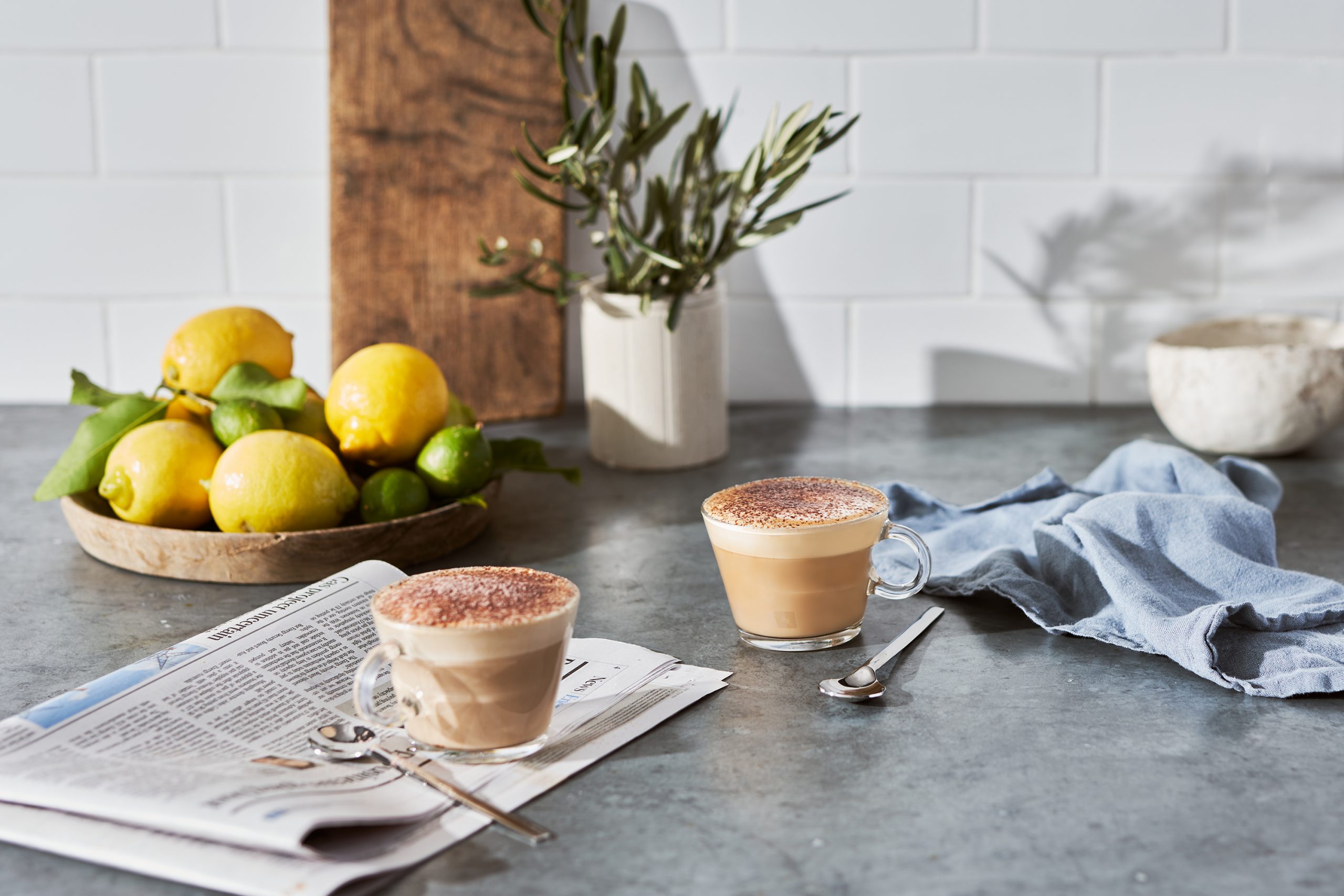With costs going up, more Aussies than ever are feeling the pinch and with the average household consuming three coffees every day, more and more are opting to make their coffee at home to cut back. New YouGov research, The Nespresso 2022 Australian Coffee Report, shows 73% of Australians are now making their coffee at home in some capacity, with more than 63% (which is 9 million!) saying it’s to save money. While Australian cafe culture remains strong, it seems that the at home Nespresso supplements the daily coffee intake and we’re still enjoying the best of both worlds.
Of course saving cash isn’t the only benefit, with 67% of Australians reporting they found it convenient, and 51% saying they were confident their coffee would always be made exactly the way they liked it. In fact, Australians were largely very satisfied with their own coffee-making skills, with 75% of coffee drinkers claiming the quality of their own homemade
“When you’re consuming several coffees a day, it’s a huge benefit in times like these to be able to pare back your spending by making some of those coffee orders at home without having to compromise on quality,” said Nespresso Coffee Ambassador, Mitch Monaghan. “Australians will continue to visit their local café for that social experience, but they also want to know the first coffee they make as they roll out of bed in the morning is up to standard. Nespresso’s AAA Sustainable Quality Program™ ensures the coffee you buy is both the highest-quality and sustainably sourced.”
If you’re in the 25% who aren’t so confident making their own coffee at home, Mitch has some tips and tricks to improve in the barista department.
Home barista tips from Mitch Monaghan
1. Find out what you like
Coffee types vary a lot, and Mitch encourages everyone to “stress test your coffee order,
validate that you do actually like it.” If you want help finding your perfect blend, Nespresso has recently launched the new Discover Your Favourites assortment box, comprising the three most popular Nespresso capsules, Arpeggio, Ristretto and Napoli, the perfect starter-pack for budding at-home baristas seeking high intensity, café-strength coffee.
Mitch also says Arabica and Robusta are the two main types of coffee, however Arabica tends to be more widely used. It is grown at higher altitudes and tends to be more acidic in nature. “You’ll find Arabica in all our coffee whether it be a single origin, blend of Arabicas or an Arabica and Robusta blend. We tend to use Robusta as an accent to some of our Arabica coffees to bring out boldness.”
Intensity does not equal caffeine. “When people start drinking Nespresso coffee capsules and exploring the range of flavours, a common misperception is that the intensity level of a coffee equates to the strength of the caffeine in the coffee. The truth is, it has nothing to do with caffeine. The intensity scale is actually a signal of the coffee’s intensity of flavour, which usually results from the types of coffee beans, where the beans have been sourced, the way they’ve been roasted or even how they’re ground. As a general rule, the darker the roast, the more intense it will be, so those flavours will be stronger,” Mitch explains.
Nespresso’s Original range offers more than 30 different coffees, so it can be difficult to know where to begin. Anywhere between an intensity 6 and 8 is the perfect place to start; not just because coffees with a medium roast are also the most balanced, but you can discover for yourself just how intense you like it by going up on the scale one at a time.

2. Master frothing milk
Mitch says his number one tip is to avoid the unnecessary jug bob. “There’s actually no purpose in bobbing the jug up and down when frothing the milk”, he explains, “On a Nespresso Creatista machine, you don’t even need to hold the jug. The steam wand has been designed to sit at just the right distance from the base of your milk jug to create the perfect texture and froth, stopping on cue thanks to a sensor on the base of the device.”
His second tip for milk is to not pause before you pour. “When steaming milk, froth starts to form and during that process, the milk and froth are well incorporated. Before pouring milk into coffee, Barista’s need to make sure the milk is as homogeneous as possible for that creamy texture and they don’t have long before the froth and milk start to separate,” Mitch says, “So, once your milk is steamed, move swiftly. Tap the jug or milk frother two to three times on the bench to remove any large air bubbles, and then swirl gently to help combine or reincorporate the froth with the milk.”
Thirdly, learn your coffee to milk to foam ratios. The most popular coffee recipes are actually very subtle in their differences – so one splash of too much foam could leave you with a latte rather than the flat white you desired. Use the markings on your Nespresso jug or milk frother to guide you in how much milk to pour and froth.
Lastly, Mitch says your type of milk will add complexity to your coffee. “Plant-based milks are a great option for those wanting to avoid dairy but they also bring out different notes and flavours in coffee. They tend to have less protein and fat than Dairy milk, which means they can split when paired with acidic coffees, these are usually blends with fruity, floral or winey notes. You can tell which coffee is best suited to which type of milk based on where your coffee sits on our Nespresso intensity scale which ranges from 2 to 13,” Mitch educates, “For anything below a 9, I would recommend sticking to Dairy milk. Intense coffees tend to be strongly roasted which removes the natural acidity in the coffee bean. If you add a plant-based milk to a coffee with a lower intensity, you might end up with something a little less delicious. I’d also recommend that when pairing a plant-based milk with a coffee, look for blends with cereal, woody or cocoa notes; these notes pair really well with the nutty flavours of plant-based milks.”

3. Check your cup
Turns out the cup matters! Mitch revealed that on average, a cold cup steals 20% of your coffee’s temperature. “That’s why most cafes take the extra step to warm your cup separately first so you can enjoy it at its finest,” he explains, “The best way to do this at home is to use the “Lungo” setting without a capsule in the machine. Run the water directly into your cup. Give it a minute with the hot water and then discard it when you are ready to make your coffee.”
Make sure the cup is the right size for your coffee choice too. Mitch says there’s a reason why size matters: “Café coffee cups come in a range of sizes designed to fit the different coffee servings perfectly. If you use a standard 350ml coffee mug for all your recipes, you’ll find it often looks half empty. Alternatively, use a smaller cup for the wrong recipe and it could overspill. Consider your regular coffee shop order and work backwards from there to choose your cup size”:
- A small cappuccino, latte or flat white: uses a single espresso shot in a 180-220ml cup.
- A large cappuccino, latte, or flat white: uses a double shot in a 220-350ml cup
- Long Black: 180ml
- Espresso: 80ml


